11 September
Fr. Miguel, Ignacio, Eduardo, and Leo have been incredibly blessed by the wonderful people who have opened their homes and offered food and lodging along the Camino de San José.
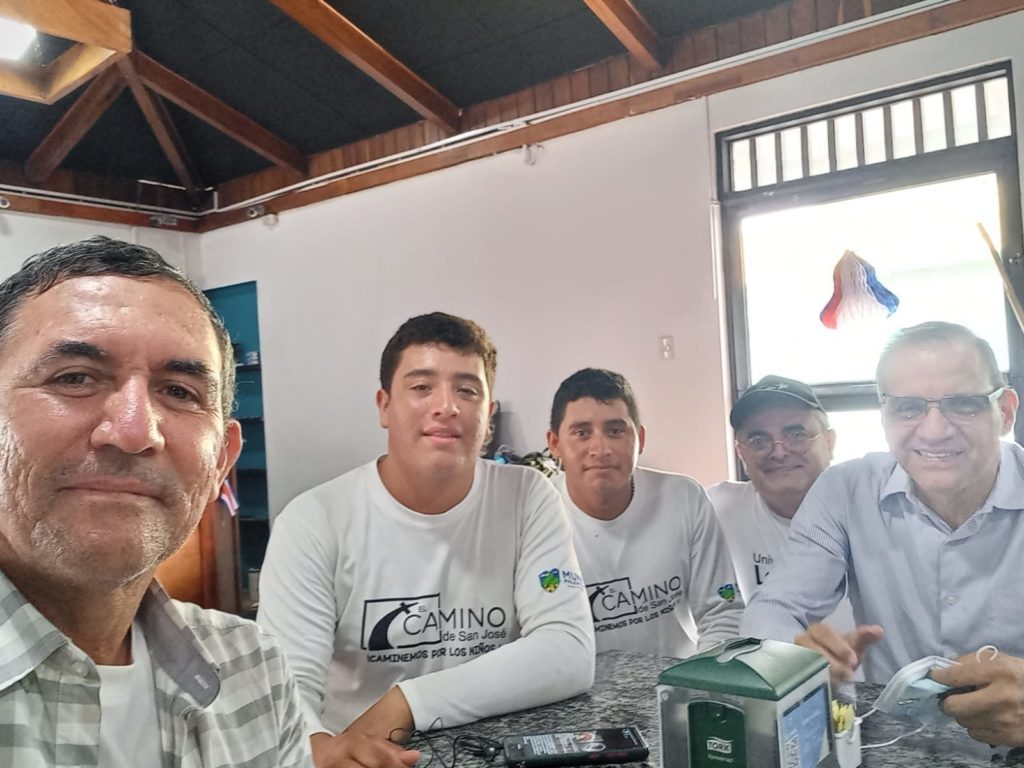
They spent a wonderful evening in Bagaces, Costa Rica with Fr. Luis Humberto Quezada at the rectory of Saint Caralampio Parish on Friday.
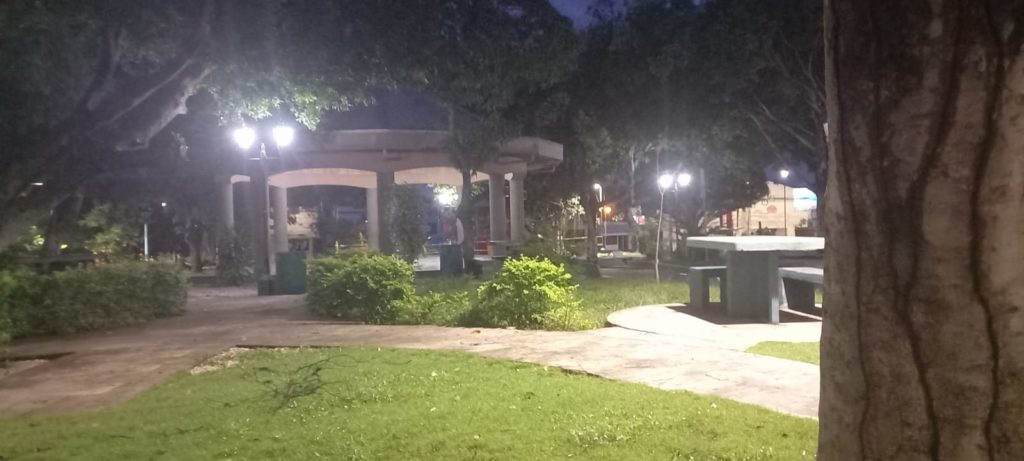
They were up and out early on Saturday morning. Central Park in Bagaces looks quite a bit different in the dark of early morning than it did in the afternoon the day before.
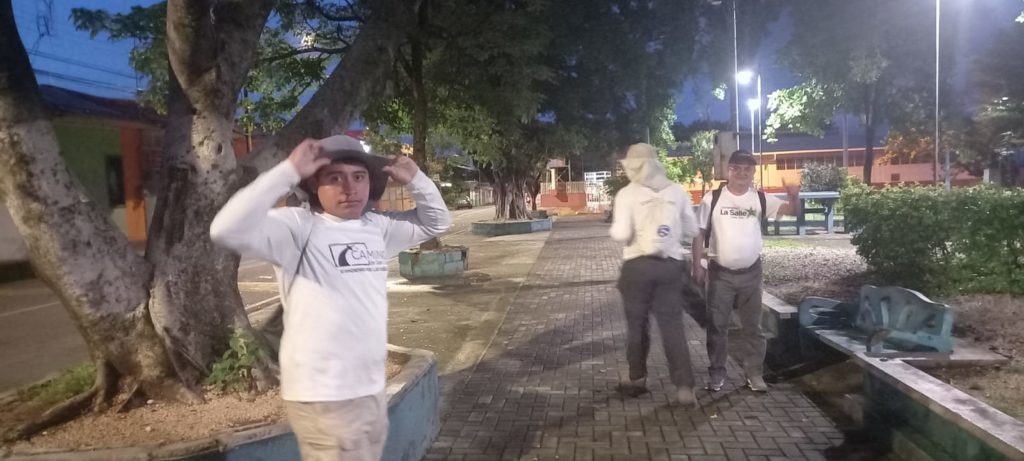
One last equipment check, a tip of the hat from Ignacio, and the team was ready to hit the road.
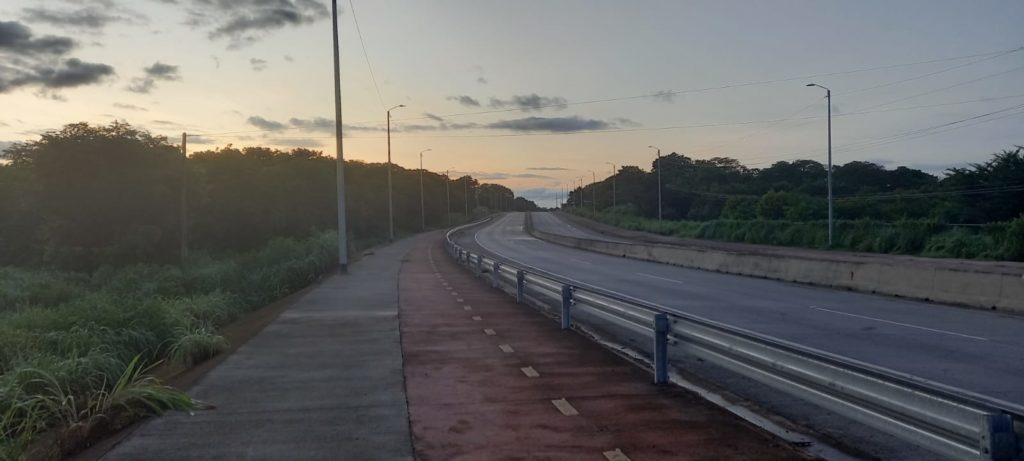
Along this stretch of the Pan-American Highway, there are convenient bike lanes for walking.
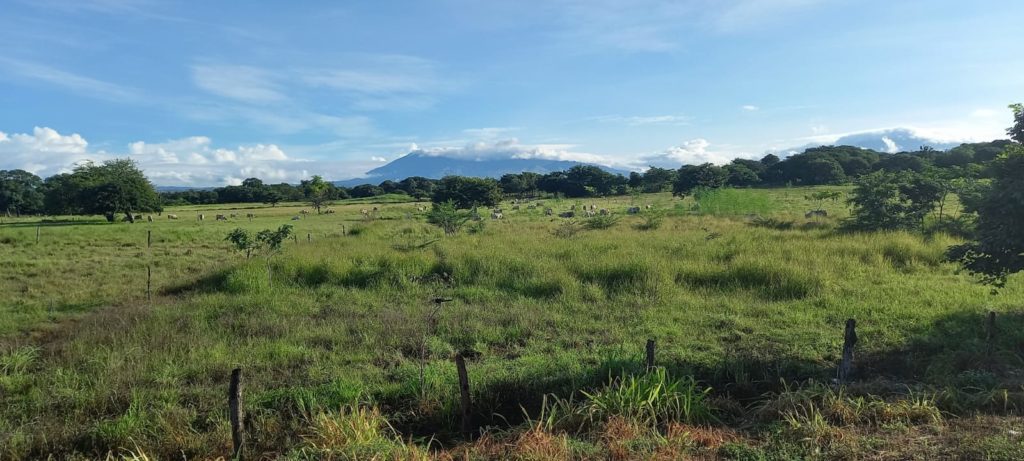
The landscape in this part of Costa Rica is, for the most part, relatively flat pastureland.
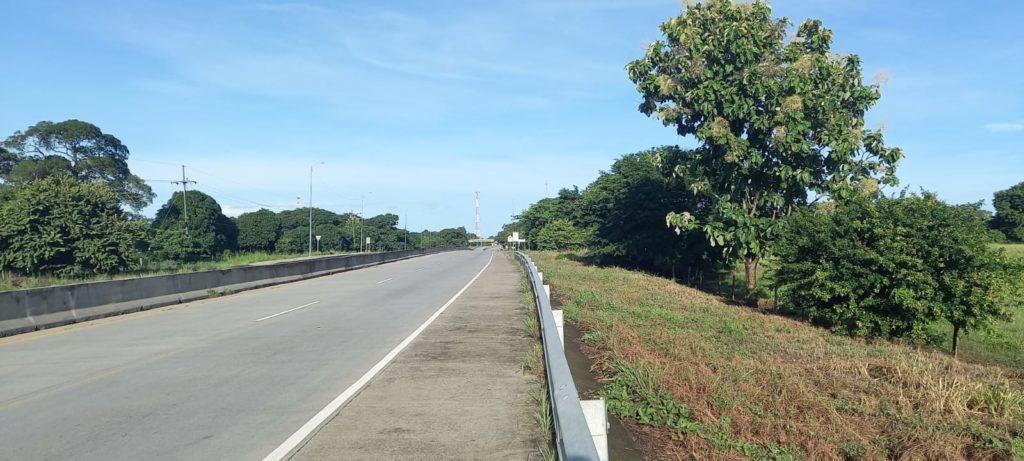
When the land is fairly flat, the walking is fairly easy…
…unless you are an ant trying to carry a frog. Then you might need a little help.
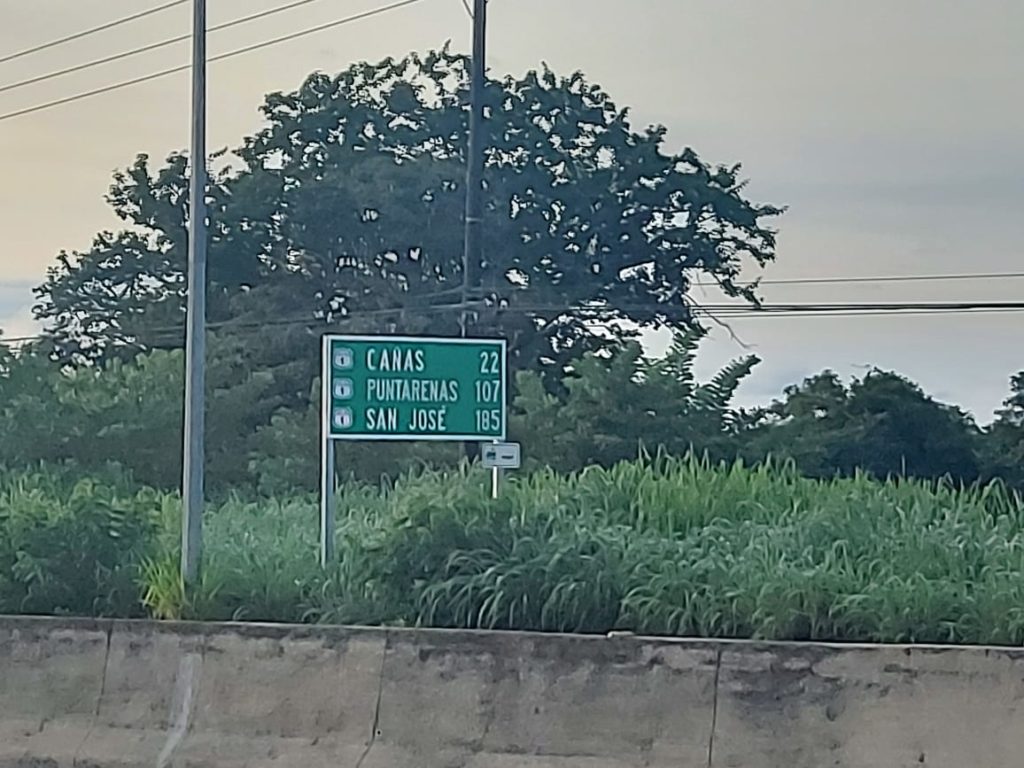
The destination for the day was Cañas, Costa Rica, 22 kilometers (about 14 miles) away. But there’s still a long way to go to get to San José…about 115 miles.
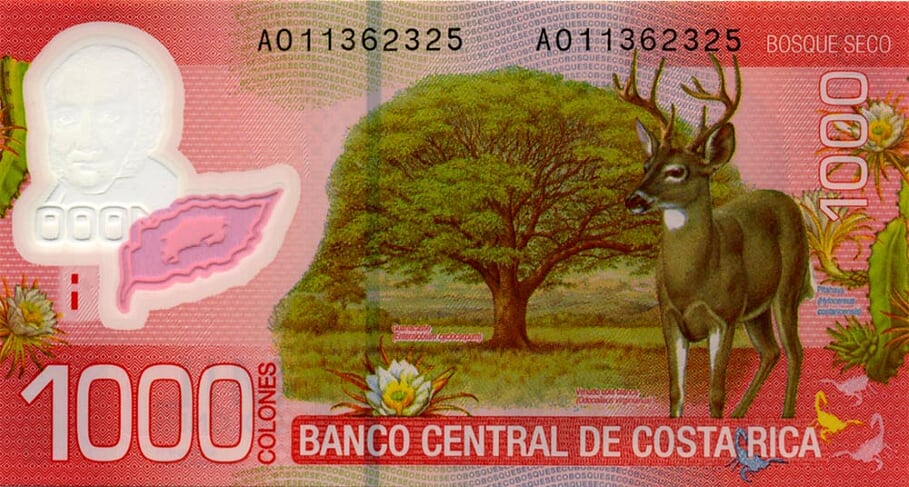
Since May 1995, the National Symbol of Wildlife in Costa Rica has been the white-tailed deer, which appears on the 1000 Colon bill. The range of the white-tailed deer, also known as Virginia deer, spans much of the Americas, from southern Canada in the north to Bolivia in the south. But those found in Central America are a smaller subspecies, with bucks weighing an average of 150 pounds, as opposed to their North American cousins who have an average weight closer to 400 pounds.
Fr. Miguel and the team were blessed to encounter a small herd of white-tailed deer grazing just off the highway. In Costa Rica, these deer are endangered due to poaching. Like in North America, they are hunted for their meat, fur, and antlers. In December 2012, the Costa Rican legislature unanimously voted to ban hunting throughout the country. The penalty for illegal hunting is a jail sentence of up to 6 months and/or a fine of up to $3,000US.
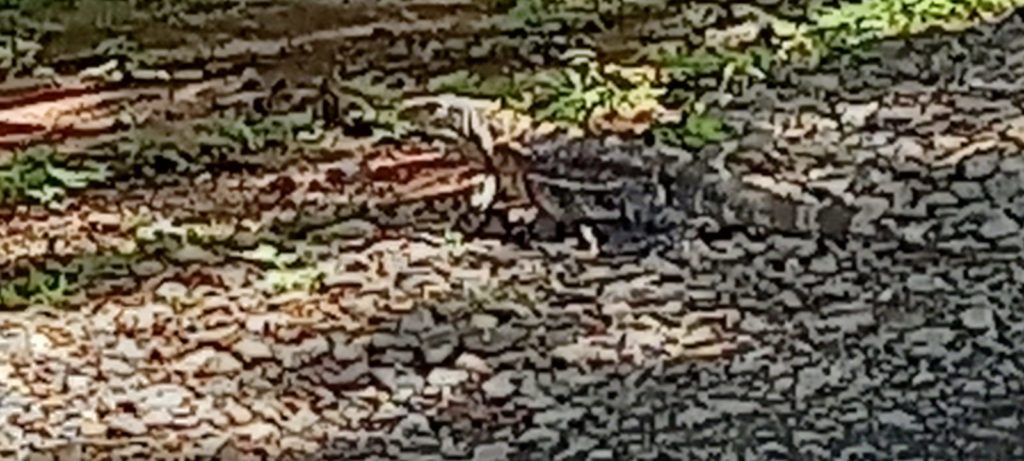
Fr. Miguel also encountered a ctenosaur, also known as a black iguana, hanging out in some mulch.
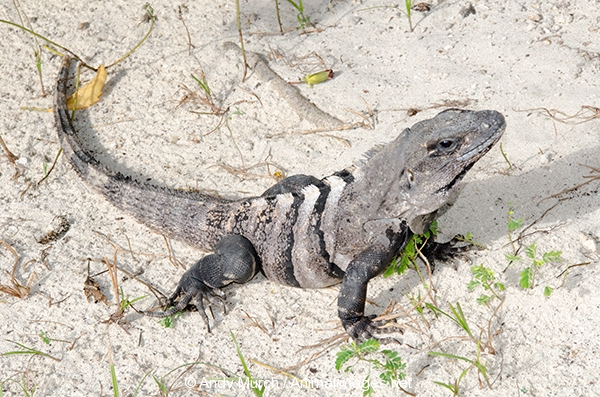
His picture wasn’t very clear, so here’s another one, borrowed from the internet, to give a better idea of what these guys look like.
Black iguanas are common throughout Central America. Males can reach up to 4 feet in length. Females are a bit smaller, but can still grow to over 3 feet long. Their name, “ctenosaur”, comes from two Greek words meaning “combed lizard”. These iguanas are known locally as the “chicken of the trees”, and are farmed as a food source and for export for the pet trade.
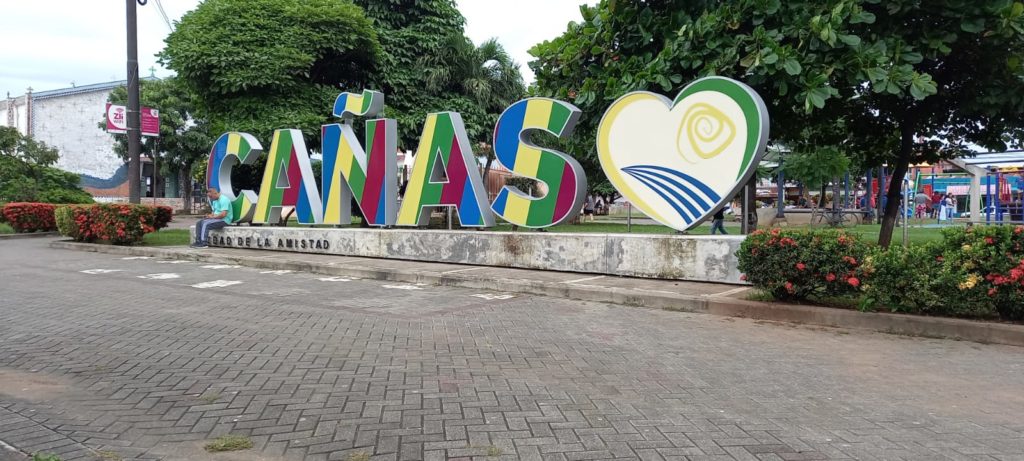
Cañas, the destination for today, is a small, quiet community known as Ciudad de la Amistad (City of Friendship). Tradition is a big part of life in Cañas. It is not really a tourist town, but more of a farming community. The area’s aloe vera farms supply Costa Rica’s thriving aloe vera beverage industry. Rice paddies are a crucial part of the food supply network in this country where rice is a key element in the everyday diet. But land is most commonly used in the surrounding area for cattle ranching, which supplies dairy and meat products for both domestic and international consumption.
Sabanero culture (Costa Rican cowboy culture) is predominant in and around Cañas. The area has many working cattle ranches, and I have read that it’s not unusual to see locals riding horses down the streets of Cañas.
Just 3 miles north of Cañas is Las Pumas, an animal rescue center that focuses on the feline inhabitants of Costa Rica, providing sanctuary for incapacitated wild cats such as jaguars, pumas, ocelots, and jaguarundis. The facility also houses other animals that are injured or otherwise unable to survive in the wild. Monkeys, otters, badgers, and tropical birds have all found a home at Las Pumas.
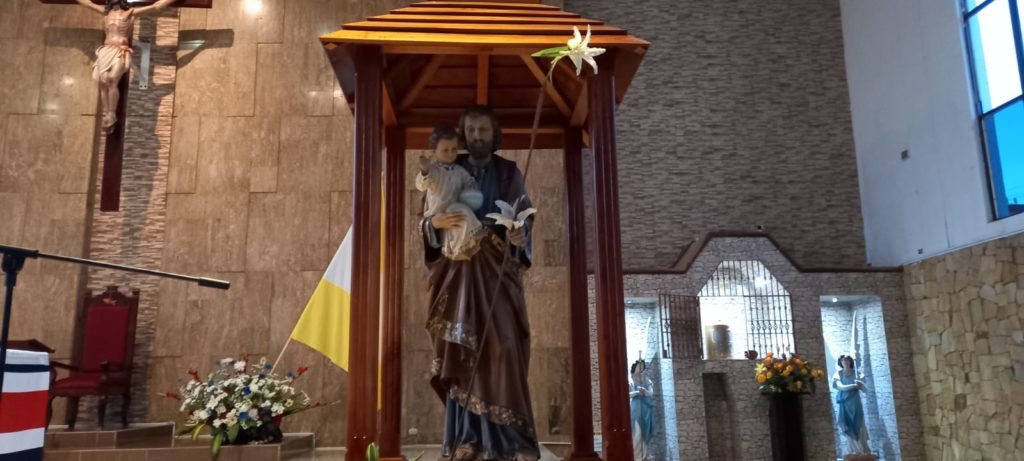
Fr. Miguel has noted, all along the route of the Camino de San José, that San José himself keeps showing up. In Cañas, he showed up again, which was an encouragement to our weary team.
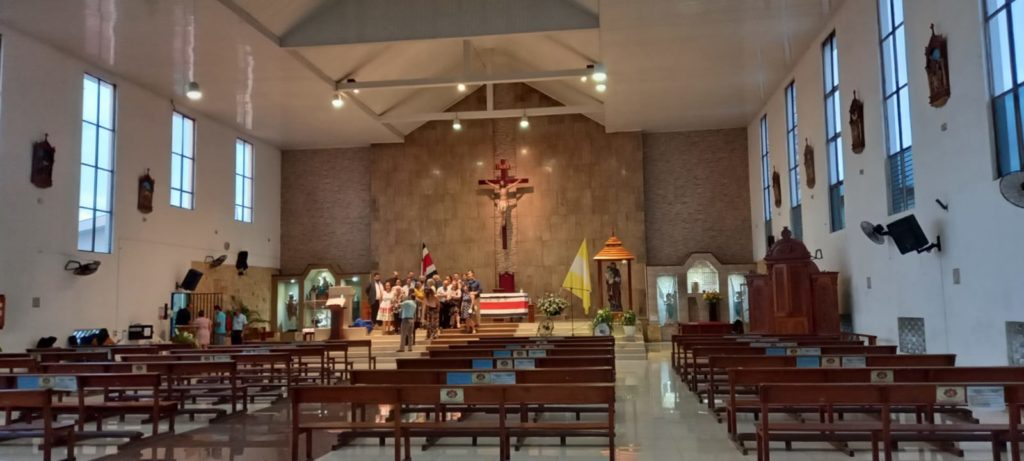
Inside, La Iglesia de Cañas is bright, open, and airy.
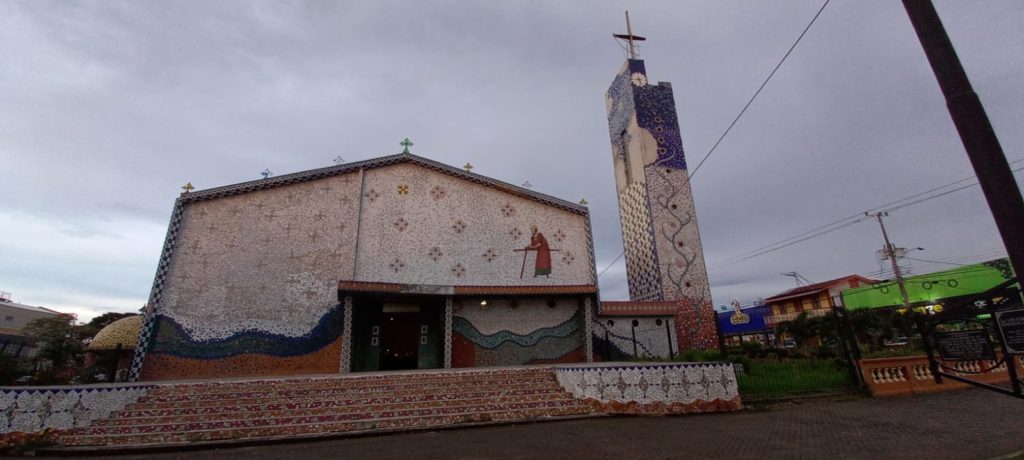
But it is the outside of the church that has made La Iglesia de Cañas one of the must see places in Cañas.
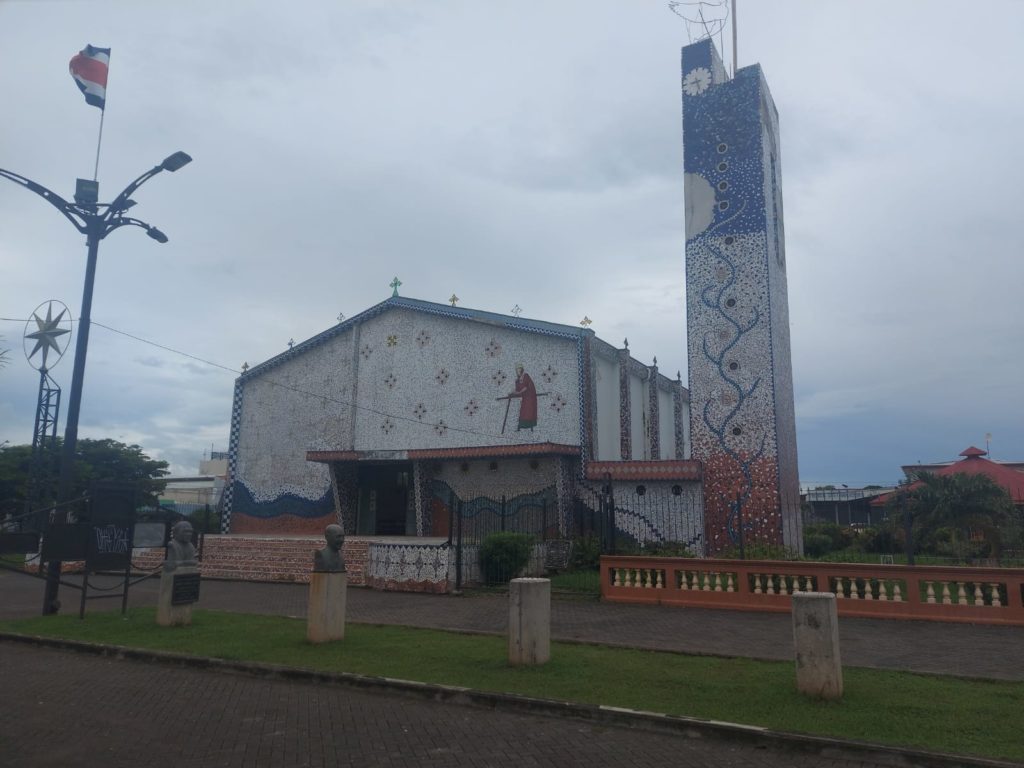
The church is covered with over a million pieces of ceramic tile arranged in stunning mosaics. Some of the works depict religious themes, while others are abstract. The 98 foot high bell tower showcases vines and celestial themes.
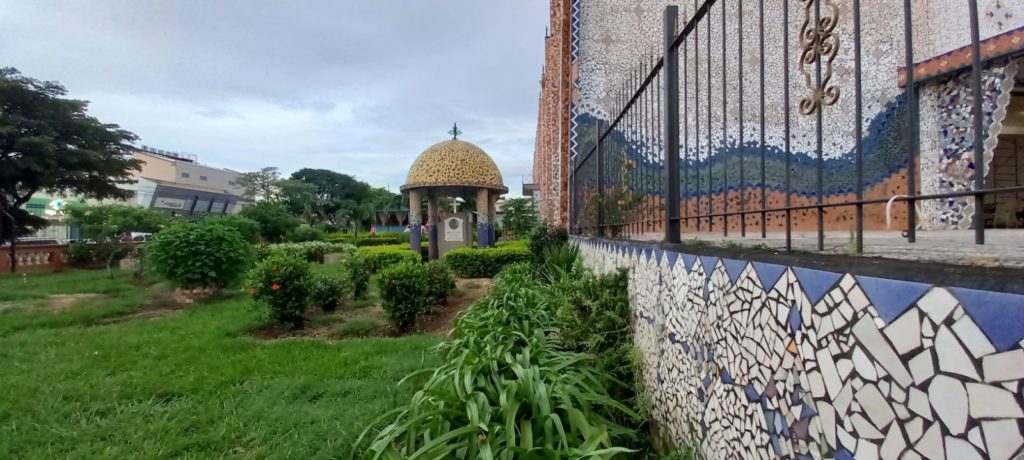
The church was designed by Otto Apuy, one of Costa Rica’s most recognized and respected modern artists. Even the walls around the church incorporate exquisite mosaic work. The artistry of the church is impressive, both from a distance and up close.
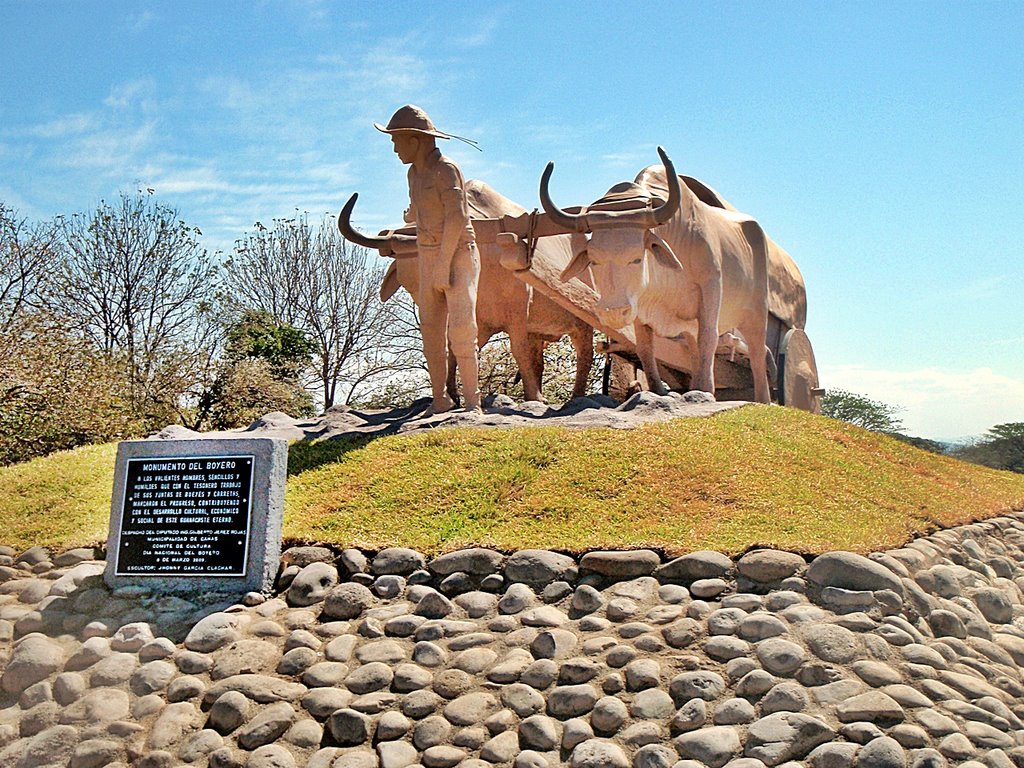
In the plaza across from La Iglesia de Cañas is Monumento del Boyero, a tribute to traditional ox cart workers.
12 September
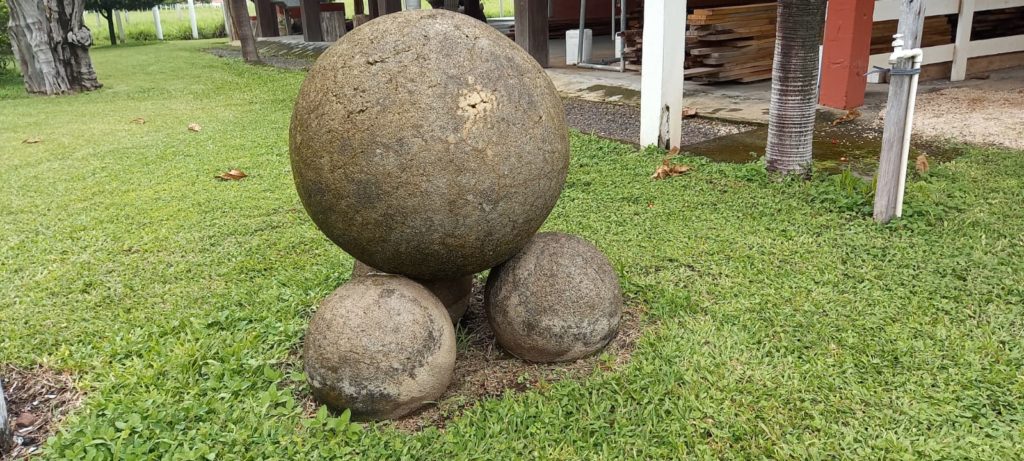
On Sunday, Fr. Miguel, Ignacio, Eduardo, and Leo took advantage of a break in their itinerary to enjoy a day of rest in Cañas. Fr. Miguel sent this picture, which looks kinda cool, but I’m not sure what it is. Cannonballs, maybe?
Leo’s aunt has a farm near Cañas where she invited the team to spend the day. And horseback riding was the order of the day.
Better turn off the cell phone.
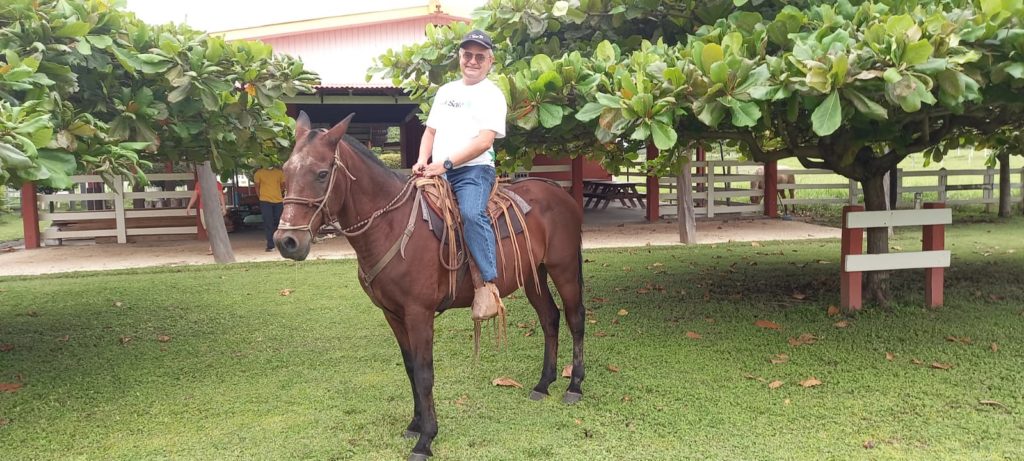
Leo is a natural sabanero!
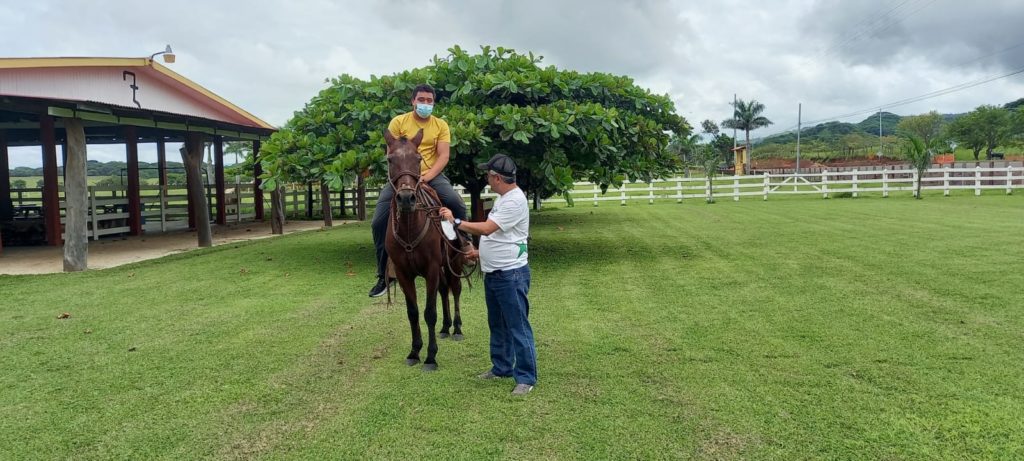
Eduardo might need a little help.
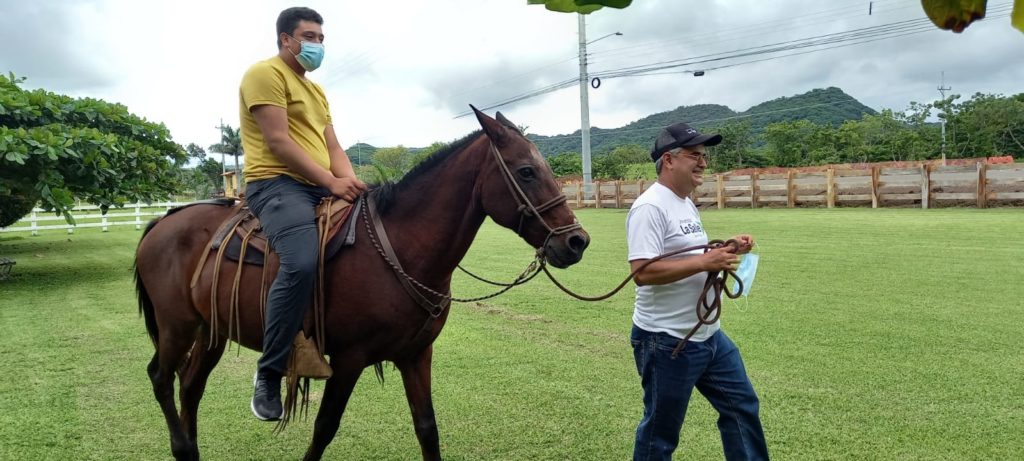
Maybe let the guy with the experience take the reins.
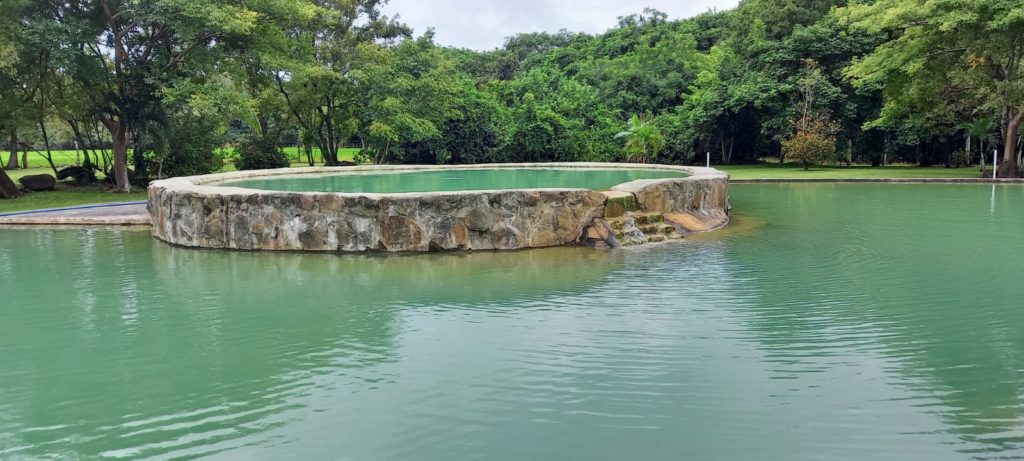
The farm has a natural hot spring. The pleasantly warm, mineral rich waters have been contained in a pool for visitors to enjoy.
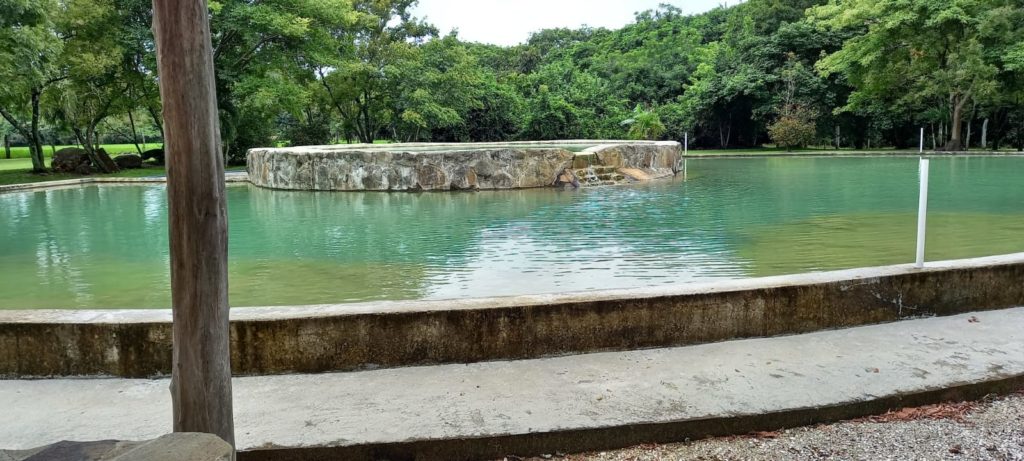
Western Costa Rica has several hot springs that have been in use for therapeutic purposes for over 200 years. Soaking in these springs is believed to provide relief from a wide variety of aches and pains.
Western Costa Rica has a few volcanoes. None have erupted in many years, but in some places, magma has worked its way upward to relatively shallow depths below the surface. Groundwater percolates downward and is heated by these pockets of magma, absorbing minerals before returning to the surface and collecting in pools.
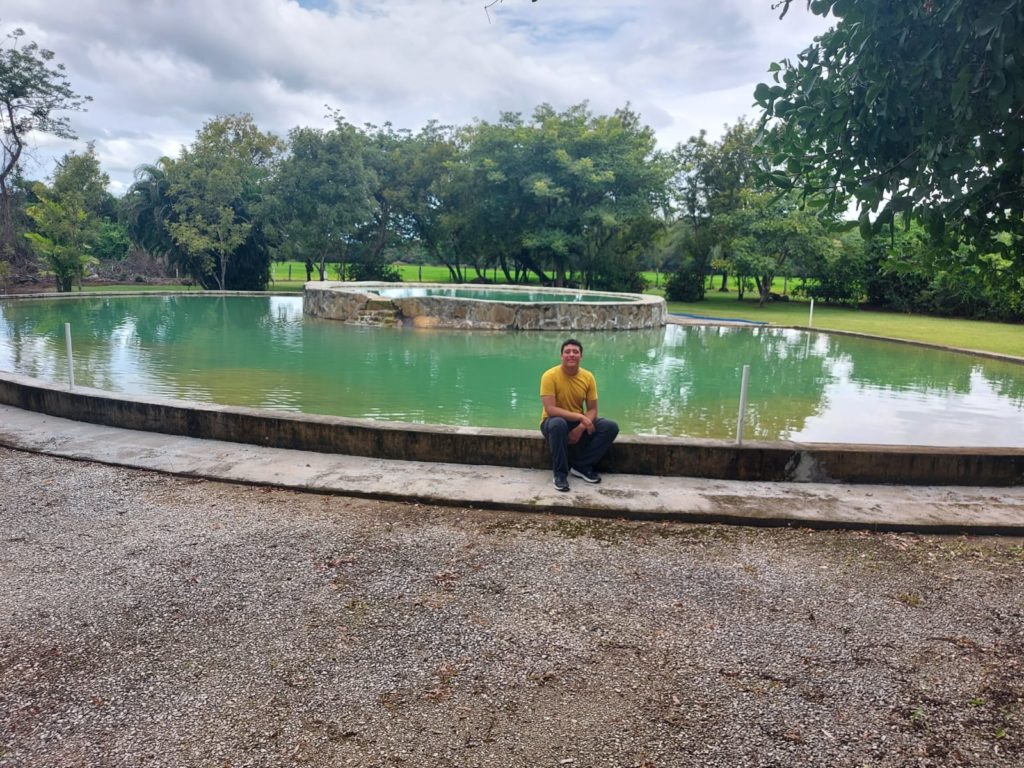
The pool on the farm is a great place for a rest…or a photo op.
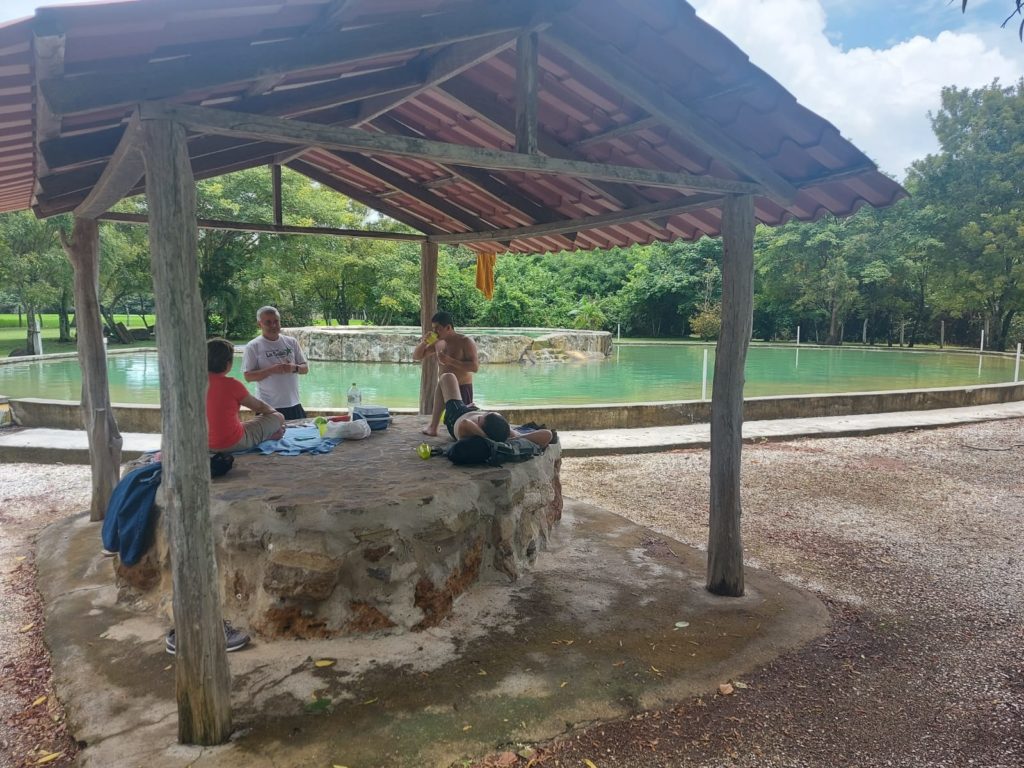
If there’s time, it’s also relaxing to just lounge around the pool.
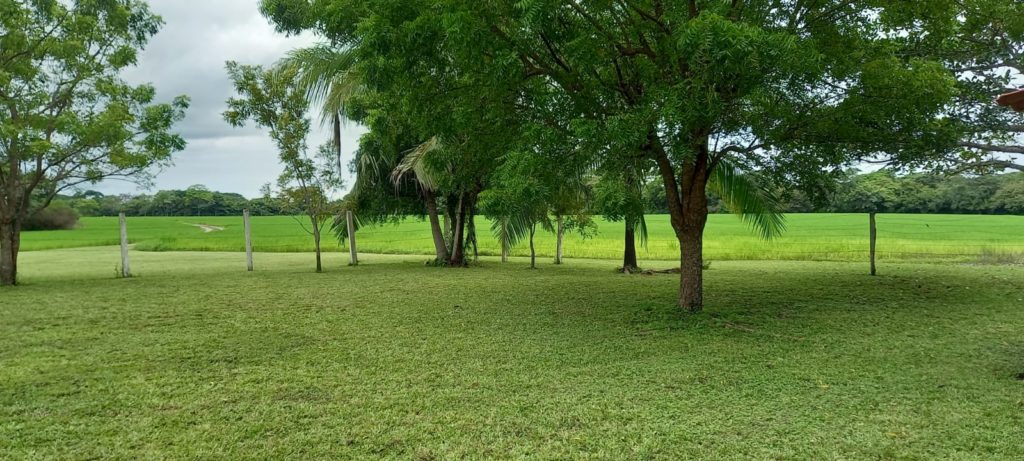
Leo’s aunt also has fields of rice on her farm…
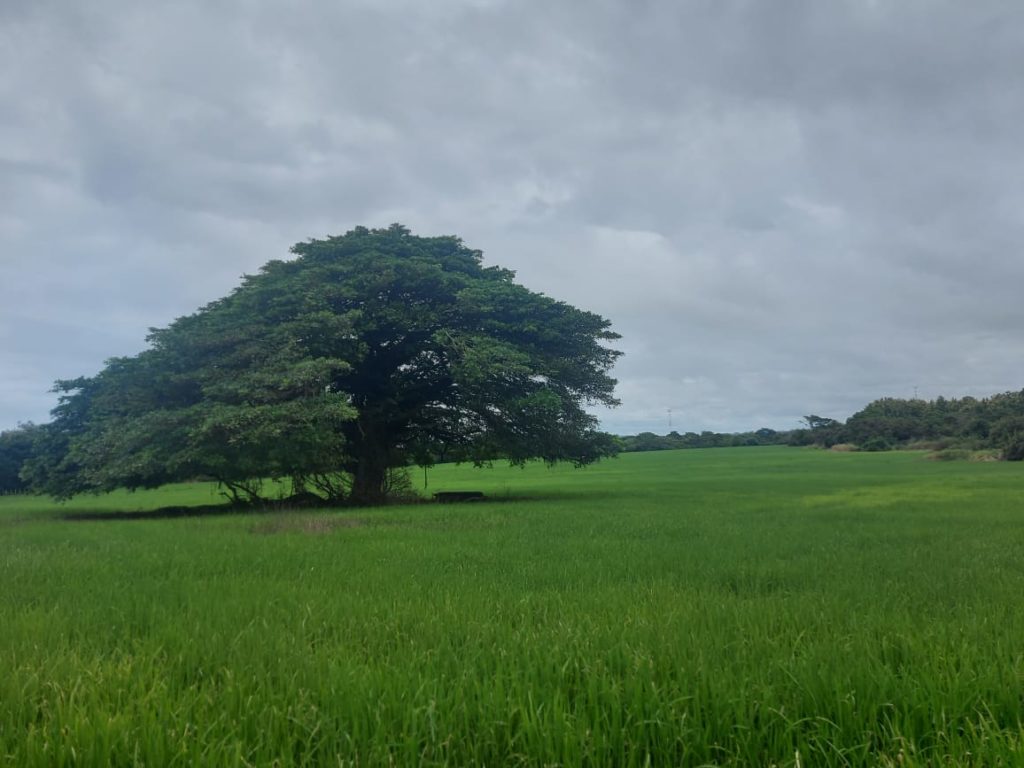
…dotted by occasional guanacaste trees.
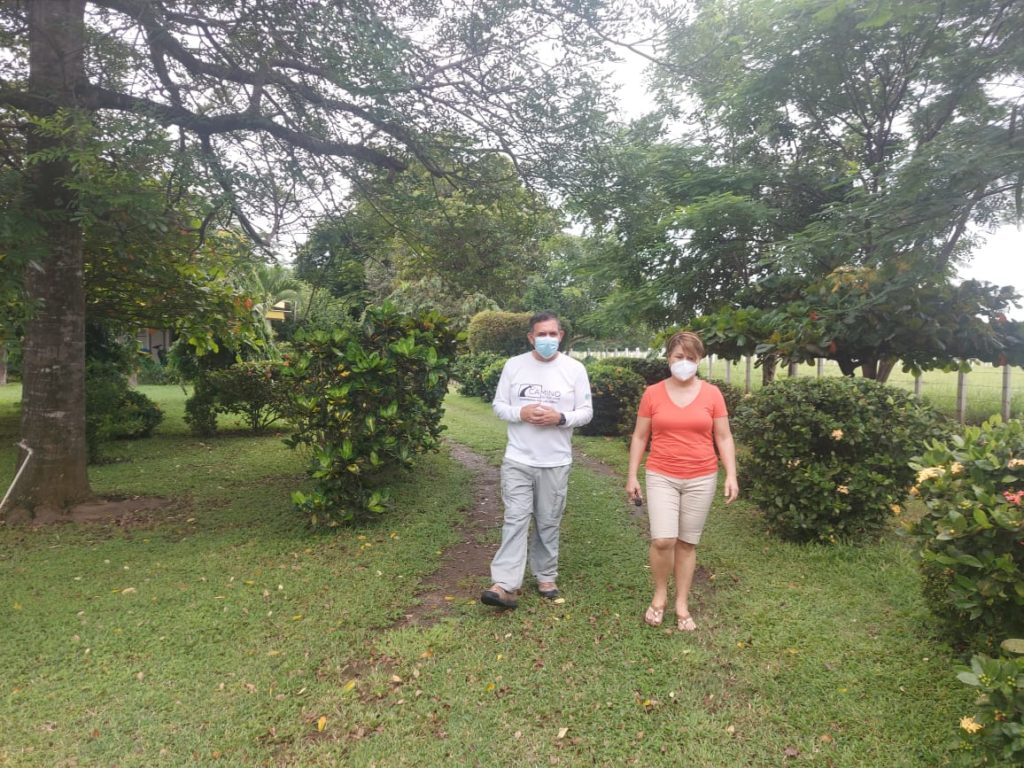
Leo’s aunt was a wonderful hostess. Fr. Miguel enjoyed his tour of the farm.
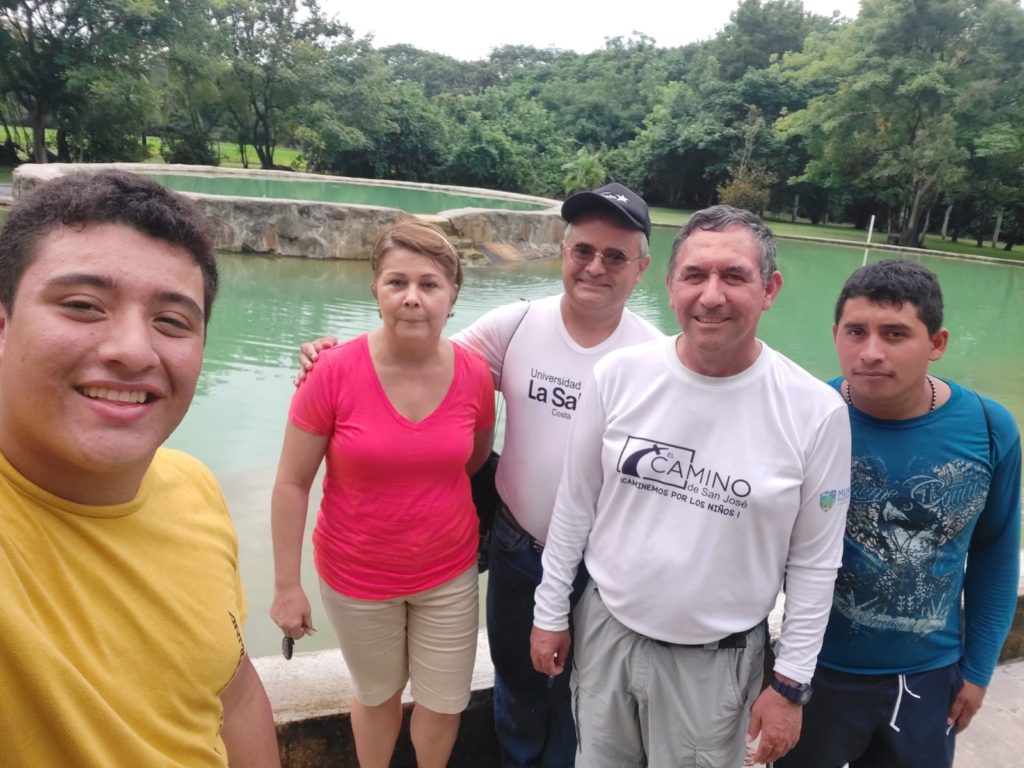
The whole team is very grateful for the relaxing afternoon they enjoyed at the farm.
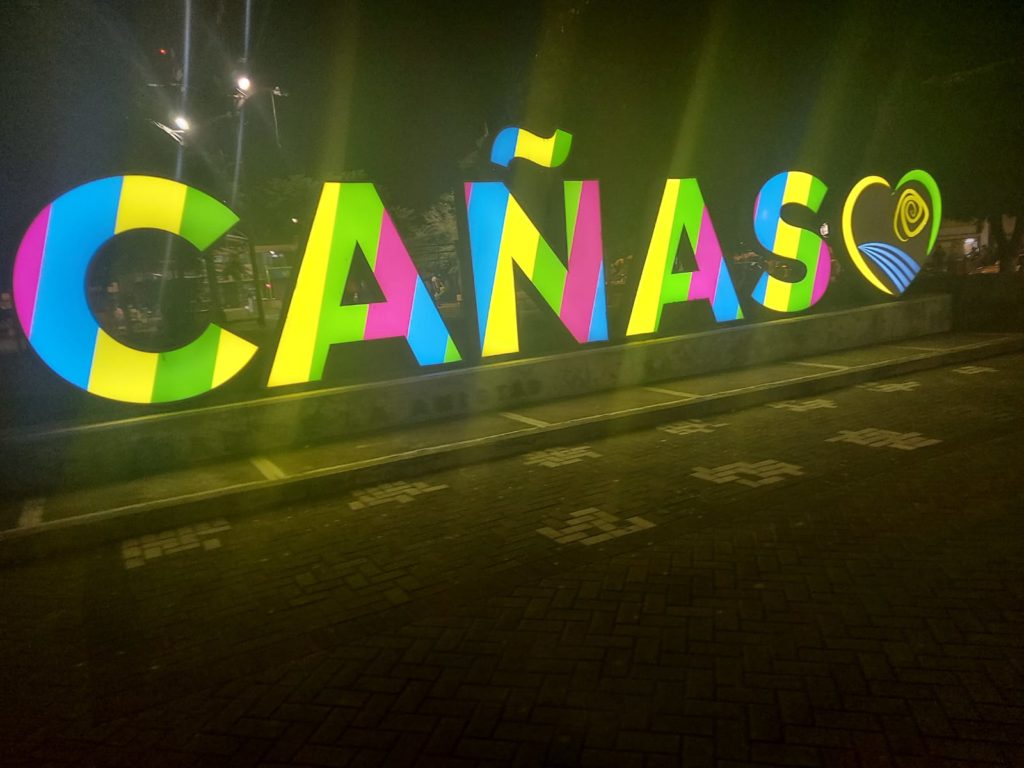
In the evening, they returned to Cañas to prepare for another day’s walking.
Thanks for coming along on the Camino de San José. Check back again soon to see where our pilgrims are headed next!
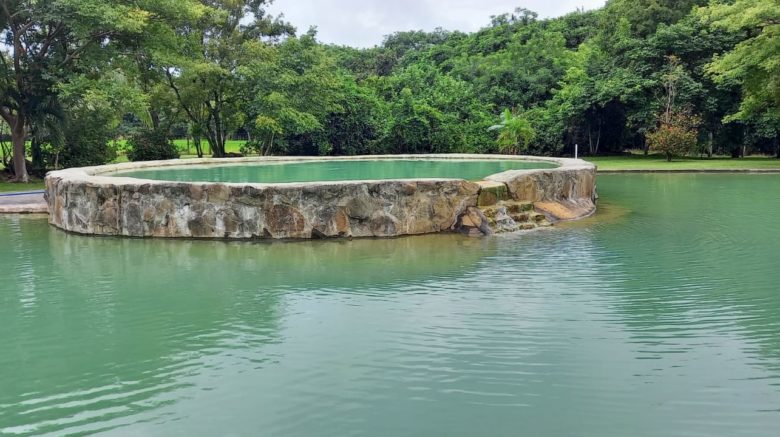
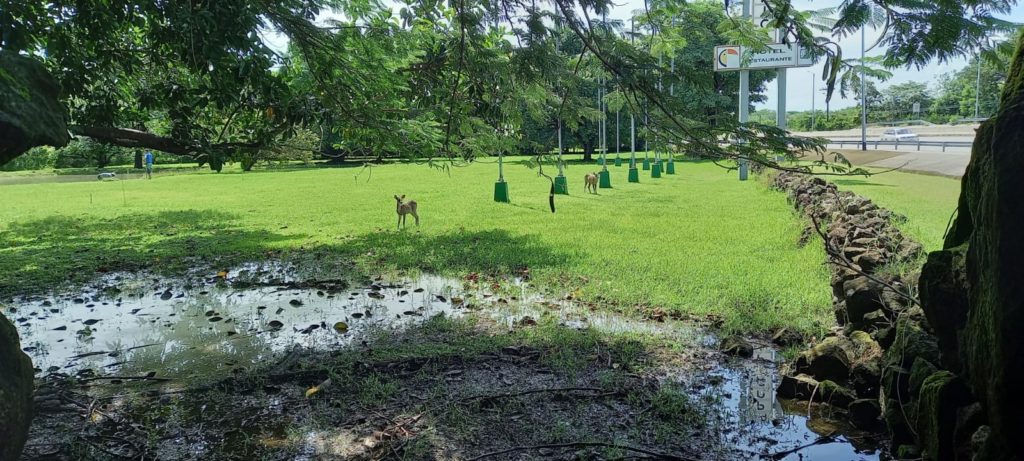
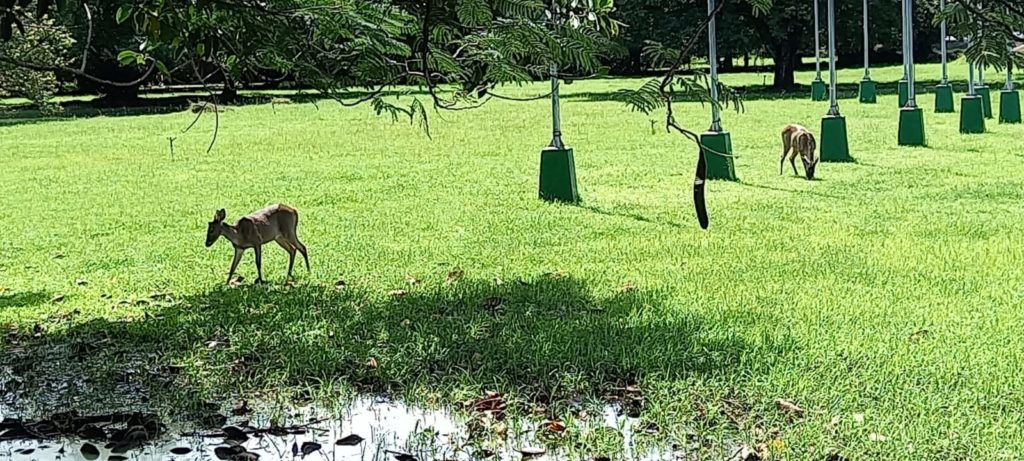
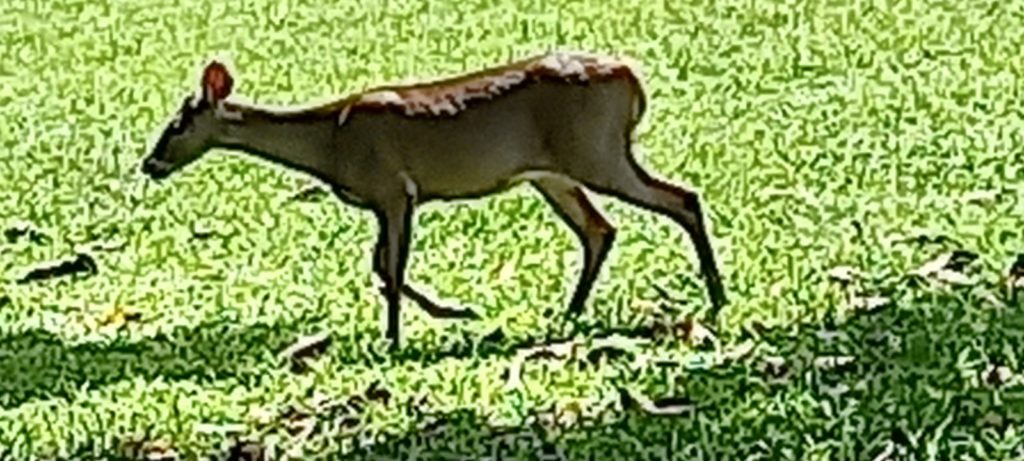
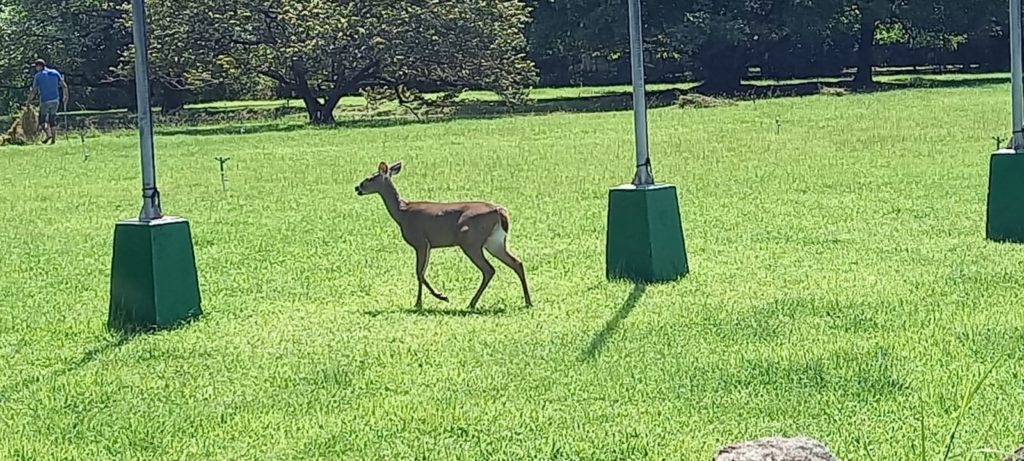
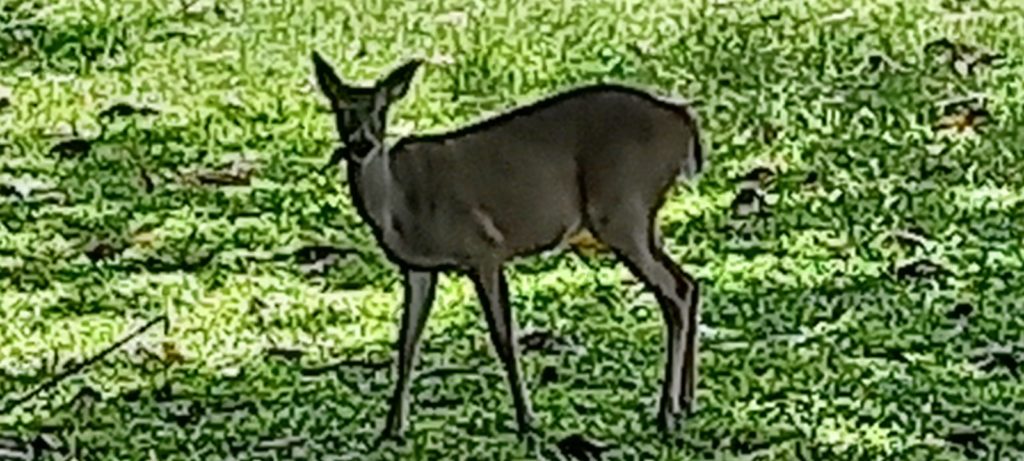
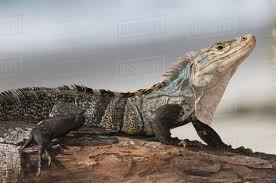
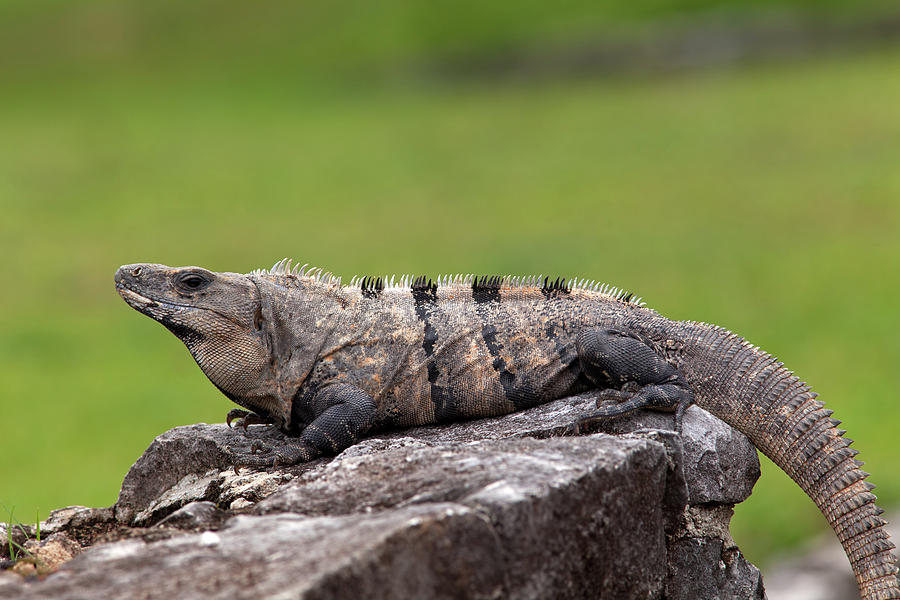
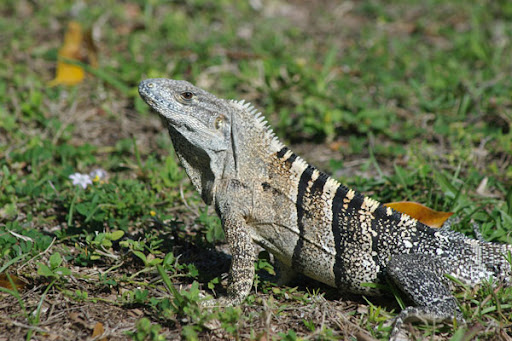
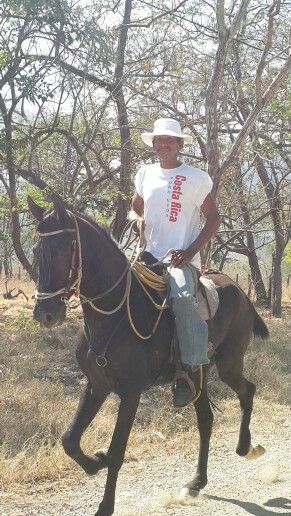
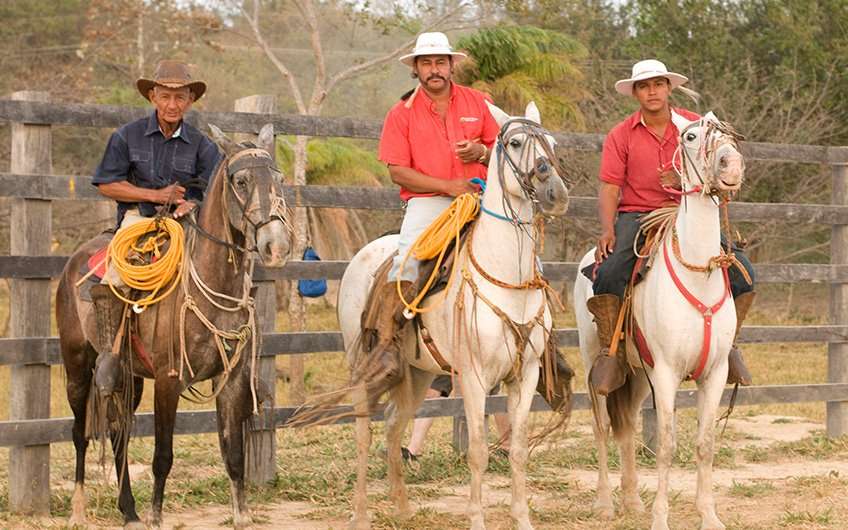
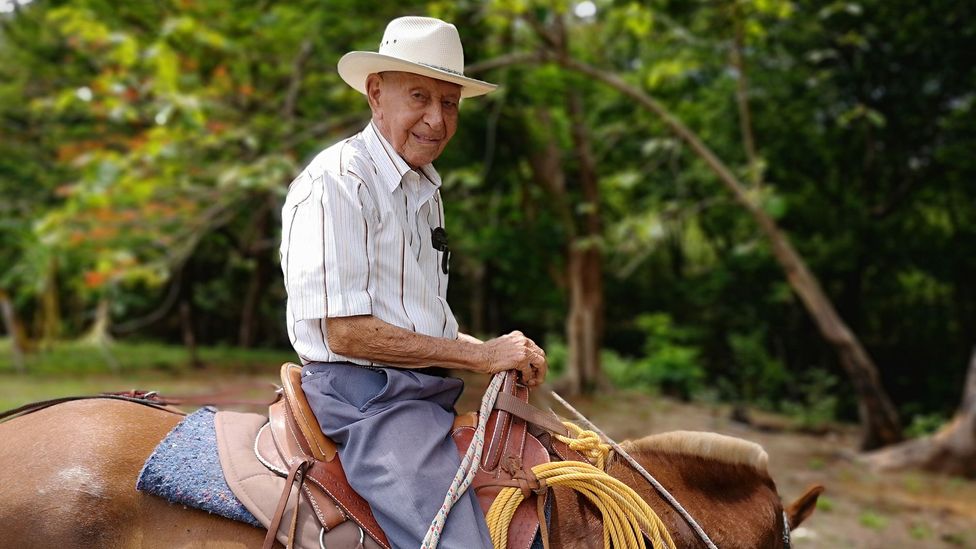
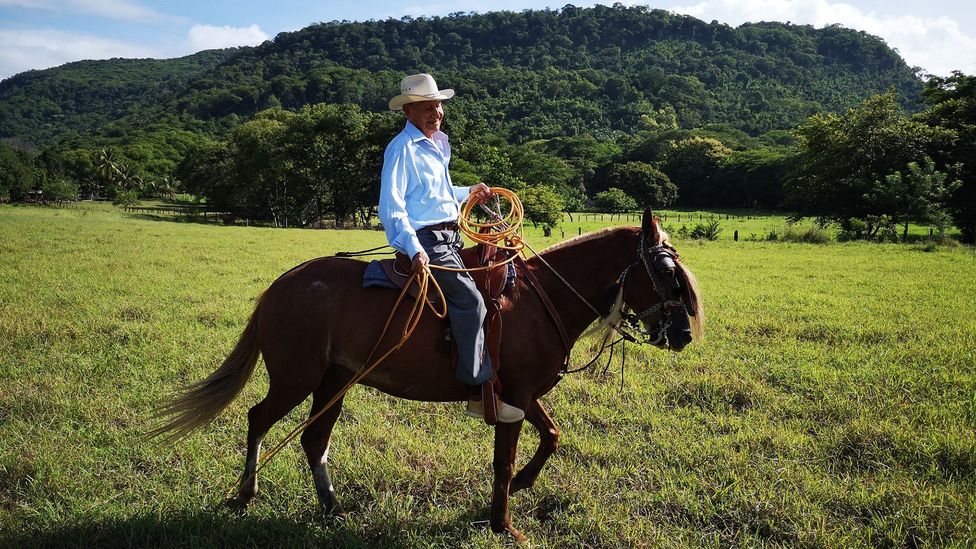
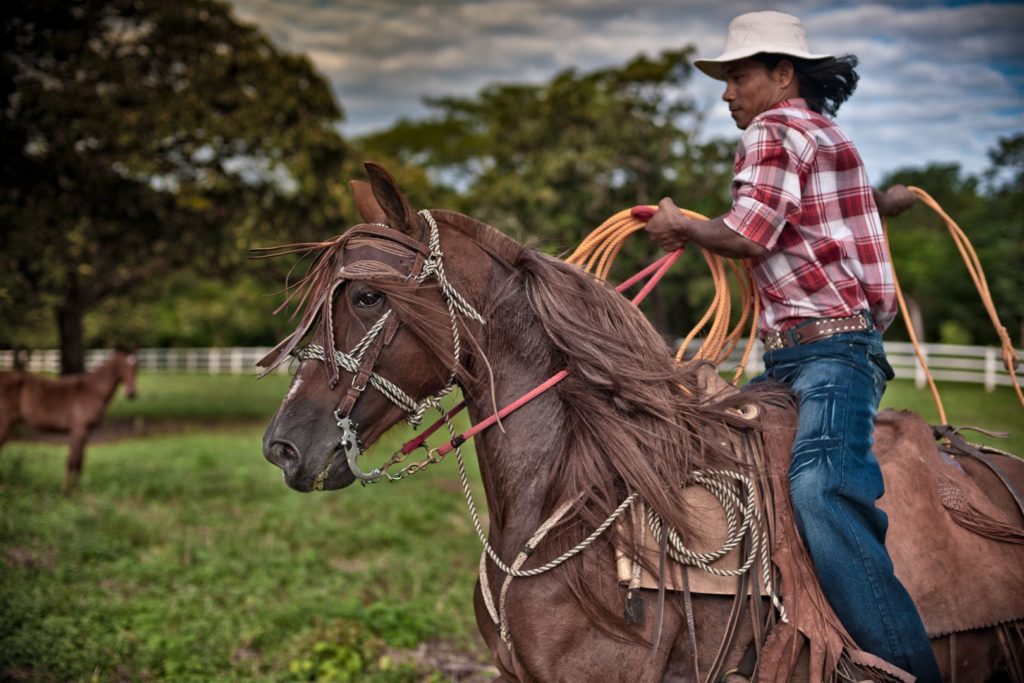
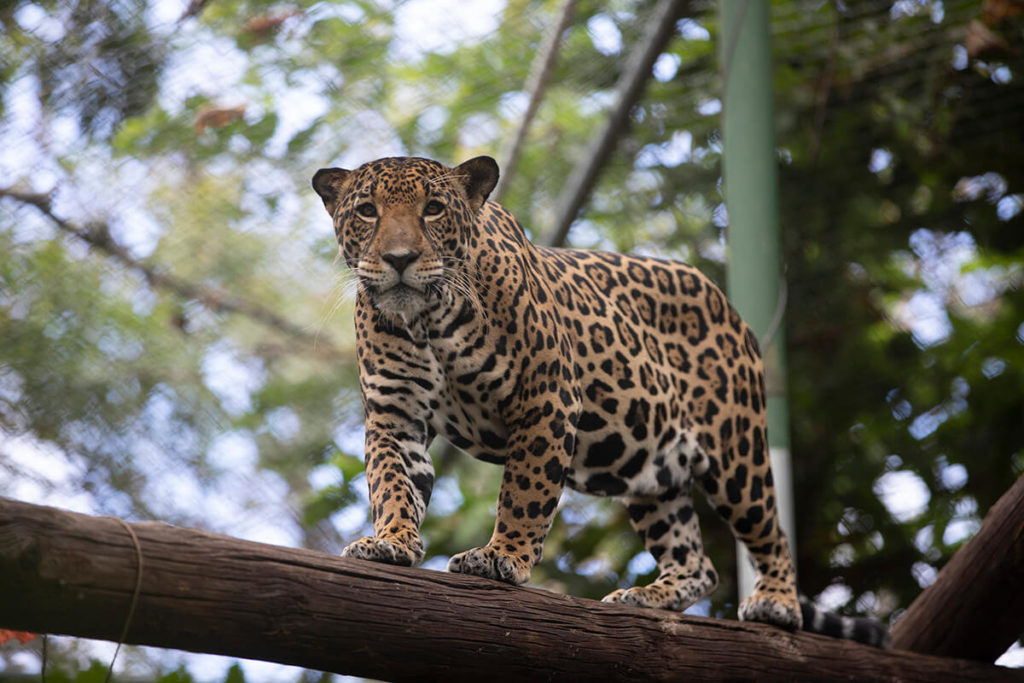
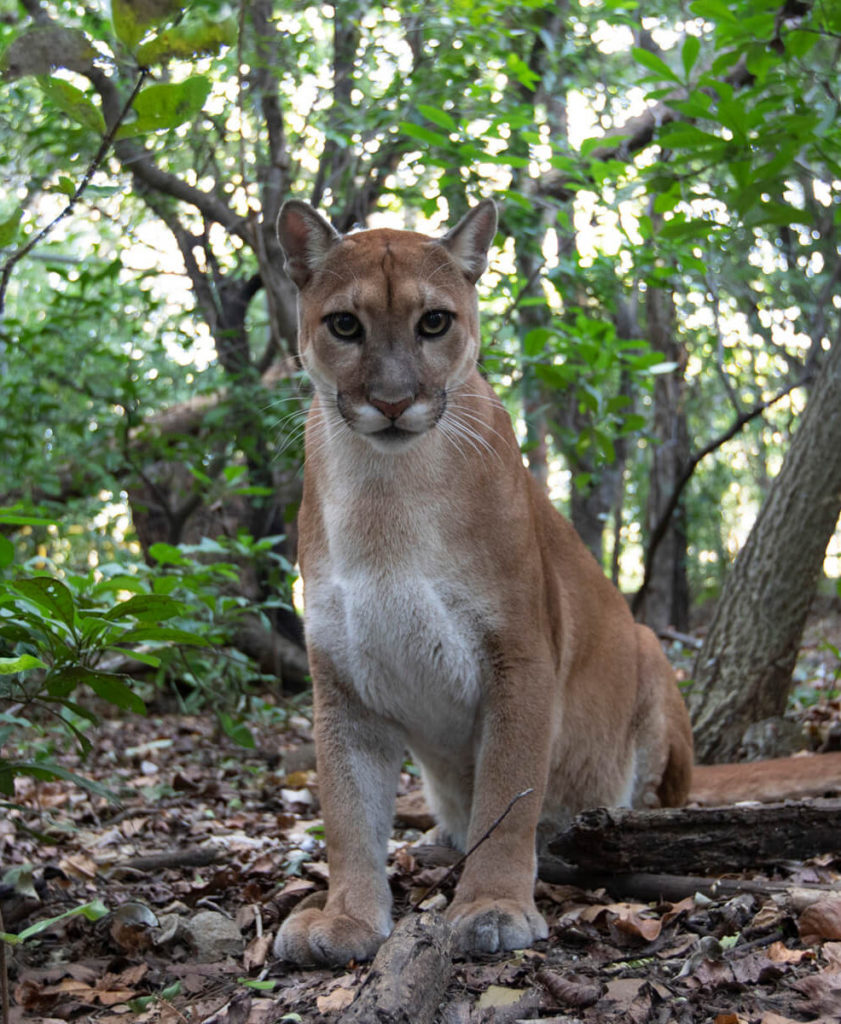
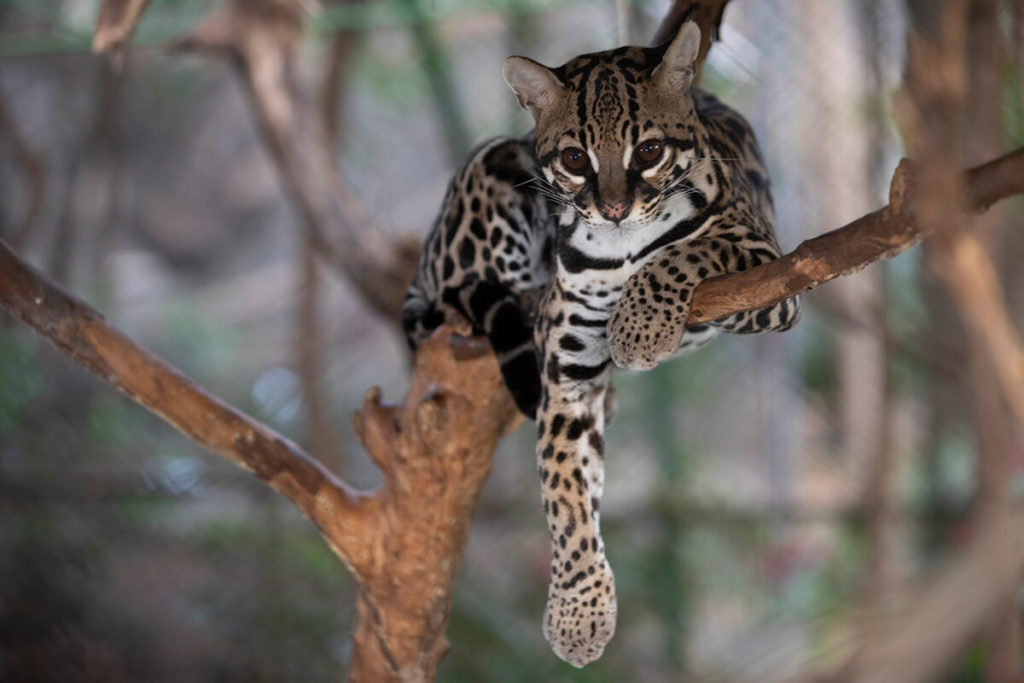
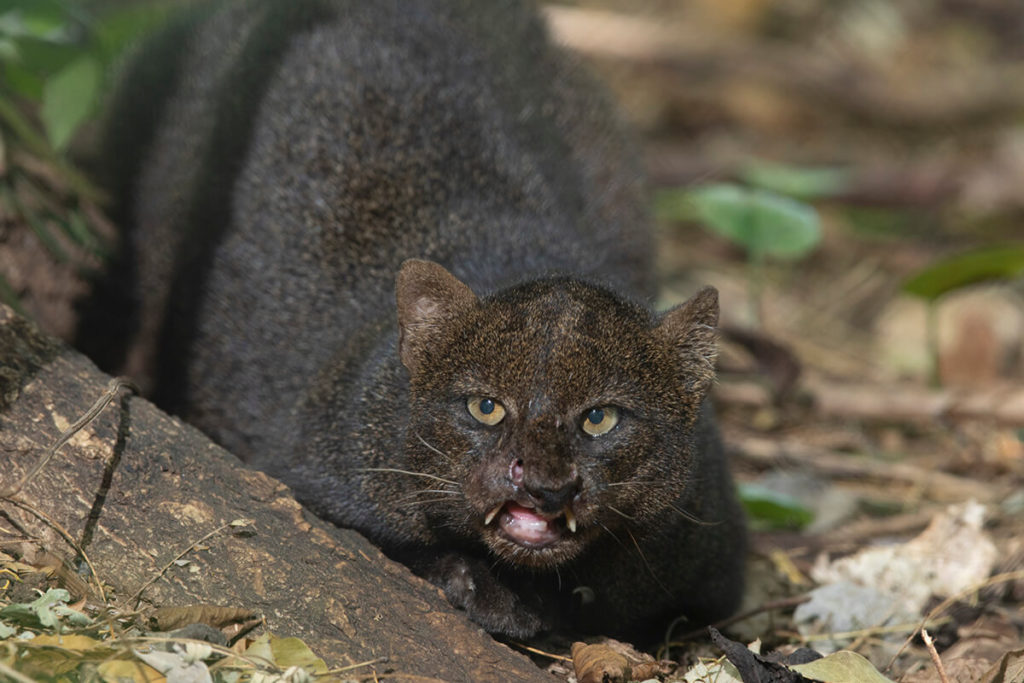
You are doing a wonderful job posting the pictures and videos! We really appreciate these updates. If possible, could someone ask Fr. Miguel to include a close up photo of himself? I’d like to print it out for Anne P. Thank you for everything! Kate